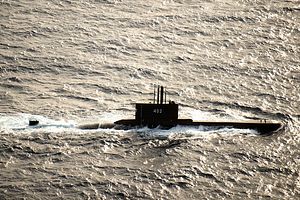By Prashanth Parameswaran
 Earlier this month, Indonesia conducted sea trials with respect to its first indigenously-assembled submarine. The development once again put the focus on a key aspect of Jakarta’s development of its capabilities in this regard.
Earlier this month, Indonesia conducted sea trials with respect to its first indigenously-assembled submarine. The development once again put the focus on a key aspect of Jakarta’s development of its capabilities in this regard.
As I have noted before in these pages, while Indonesia, the world’s largest archipelagic state, once operated one of the more capable submarine forces in Asia, today it is woefully underequipped relatively speaking and has been looking to boost its capabilities – with its previous full needs said to be for 12 submarines. That pursuit has continued on under the administration of President Joko “Jokowi” Widodo amid wider developments in Indonesia’s ongoing military modernization as well as the challenges therein.
South Korea is among the partners Indonesia has been turning to in order to boost its capabilities, with Jakarta initially placing an order for three submarines in a deal reached in 2011 and potential plans for more being mulled as the Southeast Asian state also gradually develops its capabilities in terms of expertise and technological know-how. That has continued to play out over the past few years, with the second submarine delivered to Indonesia in 2018.
Earlier this month, Indonesia’s development of its submarine capabilities was in the spotlight again with the trial of its first indigenously-assembled submarine. Indonesia conducted sea trials for its Nagapasa-class diesel-electric submarine known as Alugoro, the third of initial three submarines ordered previously from South Korea.
According to a statement by Indonesia’s state-owned shipbuilder, PT PAL, the nominal diving depth (NDD) phase of the submarine’s sea trials was successfully conducted in the waters off Banyuwangi and in the Bali Sea. During the NDD phase, the Aluguro was said to be able to dive to a depth of around 250 meters.
Unsurprisingly, few additional specifics were publicly offered on the trial outcomes or on the future outlook for the submarine more generally. PT PAL only said that the contract was about 90 percent complete, but did not elaborate on more particular next steps.
The submarine is expected to be handed over to the Indonesian Navy sometime this year, but no specific updated timeline has been made publicly available at this time. Nonetheless, given the significance of this within the broader issue of Indonesia’s submarine capabilities as well as its quest to achieve more indigenous capabilities, developments such as this, as well as additional collaboration between Jakarta and Seoul, will continue to be important to watch in the coming months.
No comments:
Post a Comment